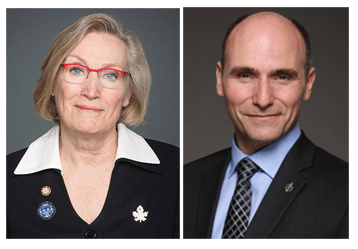This week (November 17th) is the deadline for contributions to Health Canada’s legislative review of the federal tobacco law. The Minister is required by law to table a biennial report on the “provisions and operations” of the law no later that May 23, 2024.
This post reports on the key recommendations contained in our response to this consultation process. Our submission contains 49 additional recommendations aligned with their 19 consultation questions.
A. Health Canada should seize this opportunity to modernize its tobacco/nicotine strategy
• The Canadian federal approach to the tobacco industry reflects a 20th century focus on reducing consumer demand for cigarettes, particularly among young people. The objectives of the federal tobacco law (which were mapped onto vaping products in 2018) have not been revisited in 35 years.
• Although Health Canada has adopted the goal of reducing tobacco use to “under 5% prevalence by 2035” this objective is not legislated, and is not supported by an accountability framework for government or industry.
• Although Health Canada adopted “harm reduction” language in 2018, no formal strategy (and no legislative basis) has accompanied this change. There is no federal legislative or programmatic objective with respect to vaping or other forms of nicotine use by individuals over 18 years of age.
• In recent years the tobacco industry has re-invented its marketing strategies and is expanding its range of nicotine products (e.g., heat-not-burn, nicotine pouches, hybrid products) and other psycho-active products (e.g. CBD, functional food and beverages).There is currently no federal programmatic or legislative response to these market developments.
The Legislative Review is an opportunity for Health Canada to present its analysis of developments in the nicotine market, to articulate a public health objective with respect to this market, and to make recommendations for the modernized legislative foundation that would support these objectives.
B: Health Canada should transparently report the challenges it has faced in implementing the TVPA
• Over the past five years, Health Canada has faced a number of challenges in administering the TVPA, including 6 initially identified by its internal evaluators:
1. The absence of workplans which “set out a clear path, including interim targets in the short- and medium-term, for reaching the long-term goal of less than 5% tobacco use by 2035 and for addressing the issue of youth vaping.”
2. Technology systems that are “outdated” or “non-existent”, and which prevent the collection and analysis of needed information.
3.Robbing-Peter-to-Pay Paul, and shifting financial and human resources from tobacco to vaping-related activities, risking losing ground on tobacco-related issues
4.Time-intensive regulatory processes.
5.Public communications which are not informed by updated scientific assessments, and which make questionable therapeutic claims for un-licensed products
6.Inconsistent performance measurement and limited systematic knowledge exchange.
• These are in addition to the long-standing systemic barriers noted by ourselves and others, including the absence of efficient enforcement systems (e.g. administrative monetary penalties) and a reluctance to prosecute offenders, the absence of a mechanism for a rapid regulatory response (e.g. interim orders) and the loss of surveillance tools during key periods.
• The TVPA is administered in isolation of other programs and regulatory systems which influence tobacco use.
The Legislative Review is an opportunity for Health Canada to be transparent with the challenges it has faced in using the TVPA to reduce smoking.
Key Recommendation C: Health Canada should go beyond the 20th century demand-side approach and impose controls on suppliers aimed at phasing-out tobacco use and nicotine addiction.
• A variety of “end game” and other regulatory innovations have been proposed to modernize tobacco control strategies, among which some have been chosen for implementation in other countries.
• Tobacco companies in Canada are currently operating under the protection of federal insolvency law, and are negotiating their future operations with provincial governments. This provides a unique opportunity to establish a forward path for this industry that is aimed at eliminating tobacco use and nicotine addiction.
The Legislative Review is an opportunity for Health Canada to propose more ambitious, innovative supply-side regulations.











